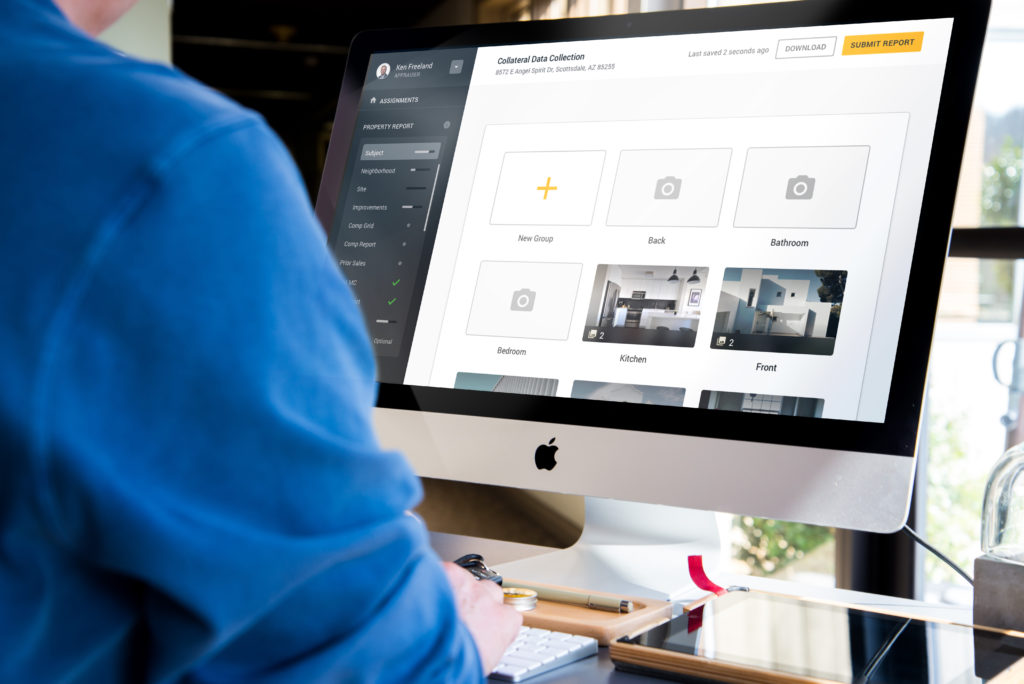Taking stock of the biggest appraisal innovation push in decades
The year 2005. That’s the last time any significant updates were made to the 1004/70 appraisal form.
George W. Bush was president. The iPhone wouldn’t exist for another two years. Facebook was just a nascent whisper on a smattering of college campuses. Tweets were only uttered by birds.
The worlds of finance and technology have changed a lot since then, and the mortgage lending industry is currently in the midst of a massive digital evolution known as appraisal modernization. We have an incredible opportunity to bring together better data, mobile tools, improved workflow, and analytic computing power to create an elevated experience for the homebuyers we all ultimately serve.
So why, with all of this innovation and potential, have we continued to require appraisers to perform every single step in an appraisal? Why have we required our most valuable, most trained, and most tenured valuation participants to maintain the most quotidian and repetitive tasks?
We ask appraisers to book their own appointments, drive around for hours at a time to take photos of comps, trudge through prickly hedges to pull tape in the ripe humidity of a Texas summer … and then drive some more.
This inflexible process is layered over the top of a graying and dwindling appraiser base, growing quality control requirements and regulatory scrutiny, and high levels of refinance volume. It’s no wonder the appraisal process has become so burdensome to today’s consumer.
In some respects, doing things the way they’ve always been done can be a good thing. It means consistency, reliability, and confidence. But as technology progresses — especially like it has in the past 14 years — it shows us what’s possible, and how doing things the way they’ve always been done also means inefficient, costly, and cumbersome.
The way we manufacture appraisals is ripe for reinvention. It’s time we allow technology to move our industry into the future. It’s time for something new. Something that will ensure the same high levels of integrity and quality, but give us better speed, more efficiency for customers, and herald a move into the 21st century for the next generation of homebuyers.
And we really should be thinking more about Generation Z, the generation born between 1997 and 2012. Gen Zers are positioned to be the largest, most ethnically-diverse, best-educated, and most financially powerful generation ever. And they expect a lot from their customer experience. Their most-loved brands are Google, Netflix, YouTube, Amazon, and Oreo. Four out of five of those brands are tech companies. Tech companies that change and innovate to meet the needs of their customers. We should be doing the same thing with the appraisal process.
We don’t expect brain surgeons to prep their patients, administer anesthesia, and clean the operating room — we expect them to use their hours of training and knowledge more effectively. In the same spirit, we at Clear Capital are on a mission to help innovative appraisers use their hours of training and knowledge most effectively by removing the mundane, repetitive, and time-consuming tasks from their plate, allowing them to focus on the actual expert work of assessing value.
And thankfully, our industry seems to have recently gotten a small dose of religion. Appraisal modernization efforts are underway that segment the traditional appraisal process into two distinct lanes: 1) property data collection (PDC), and 2) value conclusion.
In some cases, risk models may determine that PDC alone is sufficient and that a value conclusion isn’t necessary. And there’s a growing belief that non-appraisers can be trained to perform the data collection process alongside appraisers, creating further capacity in the industry and creating a better customer experience.
As these efforts have gotten underway in pilot programs, there has understandably been a lot of concern and question over what the future holds. We understand that innovation in our industry should be approached with caution. The U.S. housing market provides an invaluable service to the nation’s economy and culture, and should be protected from risk. That’s why we’ve invested significant time and resources into mitigating risk in the data collection process.
At the same time, some of the concern that’s out there is a bit misinformed. So, we’d like to address some basic truths:
Truth No. 1: There is an appraiser shortage.
There’s been industry debate over this question, but ask anyone who unsuccessfully attempted to get a timely and affordable appraisal completed in Colorado, Oregon, or Washington in the last few years. They can attest to the real pain that the emerging shortage inflicts. The shortages are geographically scattered (for now) and not widespread (yet) — but the states I mentioned are the early warning. More markets will “tip” as the appraiser population declines. The next big spike in mortgage volume will break the system if the underlying dynamics aren’t addressed soon.
Truth No. 2: The use of non-appraisers in data collection is being tested carefully and thoughtfully.
We understand that innovation in our industry should be approached with caution. The U.S. housing market provides an invaluable service to the nation’s economy and culture, and should be protected from risk. With that in mind, we’ve invested significant time and resources into mitigating risk in the data collection process.
Data collectors in Clear Capital’s property data collection network are background checked, state licensed, covered by errors and omissions policies, undergo rigorous training, must prove their skills on multiple training assignments before admittance, and have 100 percent of their submissions receive an in-depth, human quality review. The scrutiny and care put upon their work is stronger than anywhere else in our industry, and we welcome this with open arms.
We know and respect that decision-makers in our industry must rightfully and carefully vet out risks. That’s why we’re willing to open ourselves and our processes up to audits, reporting, or any other proof provision measures that the industry desires. We want to be a collaborator, and move our industry forward into a brighter future. We welcome the opportunity to partner with regulators, policymakers, and internal audit groups to make that future a reality.
Truth No. 3: Appraisers are being elevated, not replaced.
If and when the use of non-appraisers in property data collection becomes widespread, appraisers will continue to have a key — even elevated — role in the future of valuation. They’ll be focusing on higher level analytical functions that are critical to the U.S. housing market. There are key skills that appraisers bring to the table that simply can’t be replicated, and right now those skills are de-emphasized as appraisers are weighed down with lower-level data collection tasks.
The experience that homebuyers deserve — especially as we think about future generations — is one of speed and flexibility, paired with robust quality. Since the valuation is often one of the longest parts of the homebuying process, it will require a giant leap forward to make that experience possible. We strongly believe that it will be worth it.


